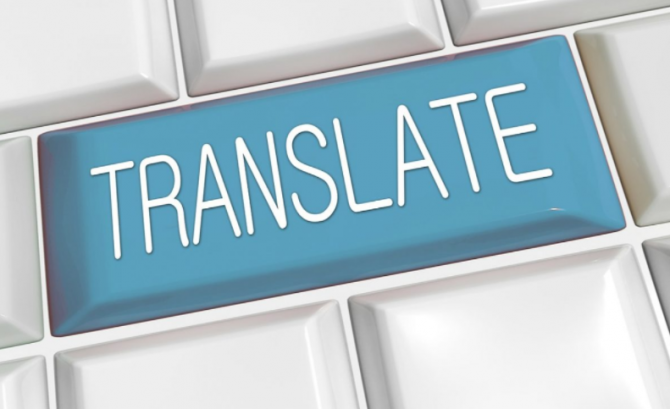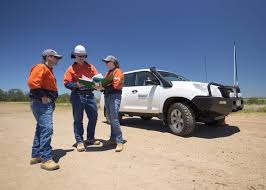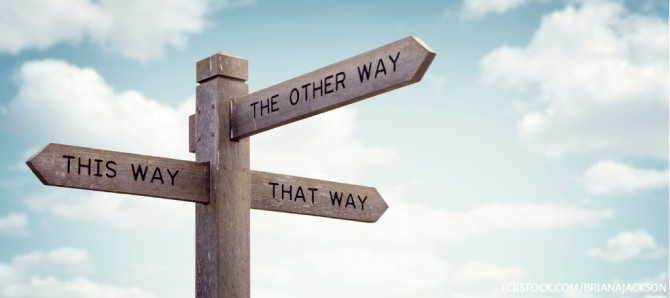
The Real Winners Emerge When The Boom Goes Bust
You may not even be aware, but there is a market shakedown underway. Craft breweries, salvation of alternative types who eschew the 9 to 5 life, are going under. In an alcohol-obsessed country there is a company growing its share of the beer market whilst also being stupid-lucky enough to uncover a profitable side hustle. What follows is a story about a competitive beer market and how Good Drinks Australia fits into it. How likely you are to invest will probably correlate with how much you drink during ASX trading hours.
About Good Drinks Australia
In the early 2000s brothers John and Bill Hoedemaker had a beer in Fremantle at the Sail & Anchor Hotel. As tends to happen after a few alcoholic beverages Bill, the award-winning brewer, and John, the details-oriented entrepreneur, decided to start their own brewery.
Brewing out of Palmyra in Western Australia, they set about producing craft beers with broad appeal. Their stated mission was to have a Gage Roads (as the company was then known) beer in every fridge in Australia. Lofty goals for sure but they’ve been plugging away ever since. Today the company produces 17 million litres of beer every year and they have expanded their offering into hospitality as well. In a potential sign of things to come, they have expanded their available capacity to produce 22 million litres and just secured the block next door (is this a REIT play after all?) so they can further increase to 30 million litres when required.
To place Good Drinks Australia (GDA) into the broader context of brewers in Australia it’s instructive to show that they are only behind the big three brewers Asahi – who own Carlton & United, Kirin – who own Lion Nathan, and Coopers. Good Drinks have finally muscled their way into the big leagues.
To get to this point Good Drinks have developed a three-pronged business model. They have their high margin hospitality segment, their low margin partner brands segment, and their middle margin own brands brewing and distribution. They currently have 3 hospitality locations across the country. The premier location is the A Shed in Fremantle Western Australia. A $10m overhaul sitting on a 40 year lease this asset provides the lion’s share of the hospitality earnings. The second is a relatively newly built out brewhouse in Redfern Sydney. The last is a brand-new Queensland pub in Eumundi called Matso’s Sunshine Coast Brewery. We will need to double back on this segment in order to unpack some of the good, bad, and ugly of it.
Good Drinks have also won the contract to supply overpriced beers to Optus stadium in Perth. God knows it’s been a long time between drinks for Eagles supporters. Just as well Flagmantle is on track and the beers can claim some kind of pseudo-freo local vibes.
Can you place this into some context for me?
The beer segment of alcoholic beverages is falling in terms of litres per person according to a study by Deloitte. Contrast this with the growth in market share accruing to Good Drinks and it starts to look like a consolidation is underway. This is even more so the case in craft beers as we will touch on later. First, we need to talk about this damned cost of living crisis.
That same Deloitte study mentioned earlier showed that the key ingredient driving the increase in alcohol prices was higher government excise rates (read; taxes). Now this sort of sucks when you love to drink beer, but it offers a huge opportunity for any beer sellers left standing once the dust settles (more on this later). Why, you might ask, are higher taxes a good thing for selling beer to an economically-crunched populace? Tobacco, that’s why. The general playbook looks like this. Taxation on tobacco is skyrocketing due to the health effects of smoking. Fair call because smoking is for idiots who don’t have medical degrees but that aside, it does offer tobacco companies an opportunity. You see, the companies can increase their prices each year and it sort of gets lost in the constantly rising prices due to increased taxation. Over time you end up with higher profit margins on an addictive substance.
The potential overlaps between beer and addictive cigarettes are probably enough for you to now see the runway ahead of brewers should they choose to take it. As with all things though, they would be relying, much like the prisoner’s dilemma, on a level of cooperation (not collusion ACCC OK, just back off) as well as a level of brand loyalty. But slowly, over time, there is definitely scope for beer retailers to make hay while the sun shines here.
Speaking of increasing market share, a decent number of craft brewers competing with Good Drinks have been going to the wall this year. Here is a sample that have folded in just the twelve months: Golden West, Hawkers, Big Shed, Wayward, Burleigh Barrels, Grand Ridge, and Wicked Elf. There is another list, including Running With Thieves, Ballistic, and Parched, who went into administration only to be bailed out by new investors. What this has done is pushed fans of craft beers into forced consolidation and this is where Good Drinks stands to benefit. I’ll touch on the background of Australia’s recent craft beer boom later but trust me, it looks just like every other bubble. For what it’s worth, I never get tired of watching bubbles play out in real time. Long live capitalism.
Be honest now, what are the risks?
There are, of course, a litany of risks when investing in WA based small capitalisation companies. But hey, at least this one isn’t a mining shit co (looking at you TG6) or a lifestyle company that’s a money spinner for its CEO/founder (looking at you Nuheara). Broadly, the way I see it, the risks fall into two buckets: management overreach and cost of living crunches.
This may sound harsh, but the management overreach has, for those paying attention, already played out to a degree. In September 2020 (ouch, what rubbish timing) Good Drinks opened its Redfern Atomic branded brewhouse. Fast forward three and a half years and all shareholders have heard about is the lack of operating leverage from this hospitality venue. Then, the 2024 half year report just drops this neat ending to a sentence: “…as we consider divestment opportunities of this non-core asset.” Given that each venue is designed around the fact it is meant to boost brand awareness as well as clean its face financially, this isn’t a great sign. Thankfully this occurred with the Atomic drink division although this does play into another potential risk about venue expansion.
Management have made public statements about wanting to have one more hospitality/brewhouse venue based in a major east coast location under the Gage Roads banner. As far as a marketing plan goes this is fairly expensive and as with Atomic in Redfern, fraught with execution risk. But I can look past that to a degree if they could keep their venue costs under control. To this point, costs have been controlled with spending of $7.1m on the Matso’s Sunshine Coast Brewery purchase and redevelopment in Eumundi Queensland along with $10m on the A Shed in Fremantle Western Australia. Although to be honest, both have left their mark on the company balance sheet. Not to be ignored is the loss of gaming income from the sale of the Eumundi gaming licences last year to finance part of the refit of Matso’s Sunshine Coast.
While each of the hospitality venues acts as a touch point for brand awareness and marketing, Good Drinks has also put an enormous amount of resourcing into the sales and marketing team. As of the last full year report the marketing spend stood at $19m and it was rising. The growth, albeit from a low base, since 2017 has been 36% p.a. To put that in context, the sales and marketing spend is 18% of the total revenue. The real risk here is that management are hell bent on expanding their empire and madly reinvesting and borrowing to do so. If they don’t reach their inflection point, then the wheels will well and truly come off.
The second crunch may well come from the continued cost of living crisis. There are of course a few ways this could play out. The more optimistic view is that consumers adapt to the ever-rising prices and continue to dine out and drink at home and parties as much as they used to. The alternative to this is not as exciting for shareholders. A snapping shut of wallets across the country as people cut back on some of the nicer but not essential parts of their spending in order to service their jumbo-sized mortgages or skyrocketing rents (being amongst the landed gentry sounds like a nice place to ride things out). Given Good Drinks has a fairly high level of fixed costs within their business anything approaching a meaningful cut back in sales would decimate the profit line of the business. This is even more pressing given the historic performance of Good Drinks at the profit line.
Over the last ten years, Good Drinks has only averaged a net profit margin of 2.3%. This is a pretty tight thing to manage in a downturn, which it should be said is not a guaranteed thing. As a comparison to Good Drinks battling along while expanding its offering, Carlton and United Brewery (owned by Asahi) has a 40% profit margin ($1b on $2.5b in sales). There is a steep hill yet to climb for Good Drinks and making that hill a little harder is the weight of debt on the balance sheet.
In 2021 the company finally saw the light on their ever-expanding share count. Well, that’s a charitable way of putting it but no matter what the genesis was, Good Drinks have stopped going to the equity market and issuing shares in order to fund themselves. What have they done instead? They’ve leveraged up and taken out loans. As of the most recent half year report, Good Drinks is roughly $38m in debt. Not too bad for a company with an equity value of $40m. I’ll take a deeper dive into this debt later but just on the face of it, debt adds risk. If the sales dry up (pardon the unintended pun) the debt, and interest repayments on it, remains. This could put Good Drinks in a spot of bother if we ever do see that recession that’s been years in the making (according to the economists – miserable bunch, aren’t they?).
One final point about the real risk of investing in a business with a hard-pressed share price is that it stays under pressure and goes even lower. Now I’m no fan of the Efficient Market Hypothesis as you’ll discover, but sometimes the market is actually pretty on to it. You know what they say about a company whose shares have fallen 90%? It was once one that fell 80% and then halved from there. The problem here is that Good Drinks is already down 86% from its all-time high. Is it due to fall a bit more, who knows?
Small detour to discuss the Efficient Market Hypothesis
In the late 60s, early 70s Eugene Fama is said to have developed the efficient market hypothesis. Simply stated it says that share prices reflect all available data about that company and the wider economy at any one point in time. To further protect itself from obvious critiques they gave it three different flavours, the strong, semi-strong, and weak with the meaning of each being obvious. The nonsense that a market run by humans, traded 40 hours a week with news about everything being consumed and understood every second of the day is just mind boggling. To prove my point, I’ll illustrate it with an example.
By now you have all heard of Ozempic or Wegovy (Australian vs US naming for semaglutide) the wonder weight loss drug. Now many have pooh-poohed this but make no mistake, it’s a revolution. Here’s the funny thing, the proof that it would work was available to you in 2021. The proof that it’s predecessor, liraglutide (Saxenda brand name) the daily dosing compound, worked was available in 2019. How do I know? Well in 2019 I sat on the toilet and read a magazine advertisement for liraglutide. It was being pitched to doctors as the daily dosing weight loss drug of the future. Many ignored it or decided the cost ($150 per pen, per week) was too high. Fair call, nothing to cause much of a spike in the Novo Nordisk stock price from the then ~160DKK (Danish Krone)/share. Fast forward two years and I’m sitting under a shady tree during a lunch break reading through the March 2021 Lancet journal, and I stumble across a study showing huge weight loss in patients during a 68-week trial of the weekly dosing semaglutide (the Ozempic we’ve heard so much about). I told anyone that would listen that they had to buy Novo Nordisk stock as soon as possible because this was a game changer. But then the strangest thing happened. The share price barely budged from it’s 220DKK price. Fast forward again to 2023 and I’m listening to finance journalists tell me they just discovered this drug and how they were the first to know about it. The price was 450DKK and rising. Popular interest was in. Today the shares trade at roughly 870DKK. What happened between (being generous here) March 2021 and today, three year later? Not a lot really. The benefits of weight loss showed up in trials which acted to reaffirm how good a drug it was (foreseeable? I’d say so) and plenty of celebrities went on it (to save their oesophagi from the constant retching). But realistically, the market for Novo Nordisk shares demonstrated anything but an efficient market.
So, with that long winded story as a backdrop is it fair to say the market has got it right when it comes to Good Drinks? It certainly looks fully beaten up and it is priced at 40% of its revenue, but we can touch base on all of this later. For now, just absorb the fact that markets aren’t always efficient.
Earnings Before I Trick the Dumb Auditor? (EBITDA)
Before we plough on into the Good Drinks financials, I just want to take a moment to rant about EBITDA. Yes, I get that it is a tool to demonstrate the earning capacity of a business but for crying out loud, why did we stop at just excluding taxes, interest, depreciation, and amortisation? Why not exclude one off costs (that are never one offs for the company’s desperate to exclude them), or legal costs, or anything that management doesn’t like?
Profits are an imperfect way of measuring a business’ performance, I know that too, but they sure are easier to read. Throw in a cash flow statement and it isn’t impossible to look over a company and see how things are faring. Instead, Good Drinks almost incessantly reports on EBITDA for all its line items. This is a strange move for a company with a decent amount of depreciating assets and a not insignificant amount of interest due on its debts. But then if I had to report middling 2% profits (or losses as the case was in the last full year) I’d probably avoid it too. The fact the managing director’s short-term incentive bonus plan is tied to EBITDA probably doesn’t make it likely to change either. If you want a far more descriptive and nuanced critique of EBITDA I can wholeheartedly recommend Burton Malkiel’s book A Random Walk Down Wall Street.
The great craft brewery bubble of the 2010s…
For those of us that remember, craft beers were proliferating like weeds in the later half of the 2010s and this will end up providing Good Drinks with an opportunity but will also give them a headache. The problem is honestly driven by passion. A huge number of people got the idea at roughly the same time that they could start up and run a craft brewery and leave the drudgery of a regular job. Coming from someone who has worked a desk job, I can see the appeal.
But here’s the thing, people who operate passion businesses are seldom focused on the financials. So, over the years from 2015 to 2020 craft brewery numbers exploded. A recent Forbes article put the craft brewery employee count at 10,000, or roughly half the total brewing industry, while only producing 7% of all beer. Maybe the best way to tell this is with a short story.
In 2015 the Sunshine Coast had one brewery. Today, it is the highest craft brewery per capita location in the country. The opportunity this explosive growth gave Good Drinks is that the owners of Joe’s Waterhole wanted to get out in what was a crazy competitive and saturated market. Good Drinks got a decent price on the purchase and spent a small fortune on a refit and rebrand to Matso’s. For what it’s worth, I think Matso’s is a perfect brand for the stunning Sunshine Coast weather. The rub here of course is that they now operate in the highly competitive market on the Sunshine Coast. Hopefully, to the victor go the spoils.
A look under the hood of Good Drinks
Good Drinks has developed their brand and protected themselves from volatility by running a three-pronged business model. They offer hospitality services with their brewhouses/venues, they distribute their own brand beers across the country, and they are on contract to distribute partner brands Miller’s, Coors, and Magners. This business model spreads their risks and makes the business as a whole more sustainable than if they were to concentrate on any one segment alone.
The hospitality segment has soaked up a huge amount of resources. There was a $10 million spend on the A Shed in Fremantle Western Australia and a circa $7 million spend on the Matso’s brewhouse in Eumundi Queensland. There is reason for shareholders to be cheering these developments, however. According to the 2023 annual report the hospitality segment of the business earnt EBITDA of $6.2 million on $29 million in revenue, a margin of 21%. This is in contrast to the core drinks segment which turned out an EBITDA of $800 thousand on $78 million in revenue, or a 1% margin.
The knee jerk reaction here to double down on venue expansion is actually the wrong one. While Good Drinks have been lucky enough to stumble on a formula for good earnings the bigger picture provides a far more tantalising return. The core concepts of the hospitality venues are to provide a high-quality touch point for the brand in general. That it isn’t acting as a loss leader to further drinks sales is a bonus that is thankfully taken. The real goal is to, over time, convert as many drinkers as possible to the brands Good Drinks owns as possible.
With two large venues now complete has the market realised that now might be the turning point for the income and balance sheets of Good Drinks? With a large (and growing) sales and marketing team in place and newly refurbished premises operating year-round, 2024 could prove to be the earnings boost shareholders have been so desperately holding out for. But maybe we should first look at how Good Drinks funded their current wave of expansion first.
To paraphrase the Edwin Starr classic, “Debt, huh, what is it good for? Absolutely nothing…” but in this case I have to politely disagree. Heresy you might say. I’ve been screaming about the hazards of debt since forever. Well, yes, you have me there but for the most part I’m talking about housing debt, but that’s a whole other discussion. It might help if we take a look at the four ways a business can fund an expansion (or acquisition). The first is through cash on hand. Think of this as the Warren Buffett problem. Mo’ money, mo’ problems. That poor bastard still has to find US$170 billion worth of investments just to get fully invested. The second is through ongoing earnings. The third is by issuing shares and the last is by issuing debt (getting a loan).
In the past Good Drinks has issued new shares when they have needed cash. When the share price was riding high on the craft brewing boom and the, mistaken, idea that Gage Roads would be the next Little Creatures and garner a massive buyout premium this was a great time to issue equity capital. But what it left them with in the end was a share register with over a billion shares (pre-consolidation) and a tiny share price. With the likely combination of a management team sick of having their ownership diluted and the equity markets not providing cheap funding they turned to taking on debt.
You’d be forgiven for assuming I might think this is bad but, in all honesty, it’s great. Shareholders aren’t being diluted, or constantly asked to dig into their hip pockets to fork out more cash and the business is building out more and more assets. If things work out, the business can pay down the debt, just as they paid down $3 million from their venue financing loan in the last 6 months. The management team have been open about expanding to at least one more Gage Roads branded site somewhere on the east coast. The company has $9 million in cash and debt of $5 million it can draw on if it were to find a venue it wanted to buy. The last thing you should know about debt is this: In order to get it, you have to convince a bank that you don’t need it.
I know, it sounds insane, but the fact of the matter is that the less you need debt the easier it is to get a hold of it. With that in mind it is heartening to think that Good Drinks has had the ruler run over it by a lender. In no way should you ever outsource your equity research to a lender, but it pays to know what Good Drinks would have had to go through to get the loan approved. It probably sounds silly because if you want to buy a house and you can fog a mirror the banks will give you a million dollars, but things are a little different when lending to corporations. Good Drinks would have put together a business case, complete with risks and risk mitigation strategies and had proof of current or future cash flows as well as assets as collateral to get the loan approved. So how good was the Good Drinks business case? Well, they currently pay the bank bill swap rate plus 1% on their debt. Yes, it’s a variable rate but currently it is costing them 5.5% p.a. That’s a rate you would beg a bank to give you on a home loan right now, let alone a business loan. So, while too much debt is not ideal for any company, the use of debt in some cases is completely justified and can act as a sign a company has matured beyond constantly raising (expensive and painful) equity capital.
While we are talking about balance sheets let’s take a look into the financials. According to the annual reports, Good Drinks has grown its revenue by roughly 14% p.a. over the last decade. To be fair, it’s been a story of slowly and then all at once with revenue moving from $27 million in FY14 to $36 million in FY20. From here it took off with FY23 recording $106 million in total revenue. During that time net profits after tax margins have fluctuated between -6% in FY20 and 7.8% in FY21 (they lost $2 million in FY20 but benefited after this from Perth coming out of lockdowns much earlier than other capitals). I’m a conservative sort of guy so I’ll only credit them with their 10-year NPAT record of 2.3%. If revenue stays flat on average (and with that sales and marketing spend this would be a surprise), I’d expect Good Drinks to take home around a $2.4 million profit. This would put Good Drinks at a roughly 17 P/E ratio. That’s the same multiple as Asahi and Kirin I mentioned earlier, $27 and $18 billion companies respectively. So, for context, Good Drinks at a market capitalization of $40 million is being given the same growth prospects as companies at least 450 times larger than it. The cheerful cherry on the cake for investors is that currently Good Drinks is trading at a 12% discount to its net tangible assets. Now, to be fair, even this discount doesn’t accurately reflect what investors might hope to recover if the business actually went under. After all, assets sold in a fire sale aren’t really going to fetch their full value. But if we place a 30% discount to NTA we can get an asset backing value of 25c for a company whose shares currently sell at 32 cents. Trusting their internal numbers, you are buying $1 for 88c, which is a value investor’s dream.
By and large when you are investing, you might find it more helpful to look at the share price chart last, or at least a little while after you’ve dug into the company details. Good Drinks is a great case in point. The Good Drinks share price is down around 85% since it’s all time high in 2013. There are likely scores of investors who are sitting on significant losses with this company. For example, such is the precipitous fall in share price that there is likely nobody who has bought this calendar year and managed to turn a profit. Year to date the share price is down 25%. Over a full year it’s halved.
Two things stand out to me when I come across a company that is this beaten down and yet still growing its revenue, if not yet its profits. The first is that the market is clearly pricing out any chance of growth. We’ll see, potentially rightly, NVidia get a PE rating of 75 which sort of telegraphs that the broader market is expecting a lot of growth in earnings. So, it strikes me when Good Drinks keeps growing its revenue, and admittedly paying up to expand its facilities, that it is being treated like a leper in the share market. I can appreciate that the hospitality venues will eventually, if they haven’t already, hit a ceiling on their earnings. After all, you can only serve so many pub meals and beers in the trading days you have available to you. But the part of the business that stands to really expand is the very part that is already growing at a healthy clip. In the most recent half year Good Drinks increased their beer sales by 11% while the total beer market fell by 3%. Good Drinks is constantly adding to their 2.5% share of the total Australian beer market and when the venue expansion is complete, or pauses, they stand to have a share of the market that will throw off cash to pay down debt and solidify their position as a major player.
Now that you know Good Drinks shares have been hammered and that they are a relatively small company, two things should occur to you. The first is that nobody, or next to nobody is going to be paying much attention to them. What research house is putting out regular reports on Good Drinks with its $40 million market cap and a chronic history of burning shareholders with constant losses. On top of this, no brokerage firm is going to cover a company that doesn’t need to pay them to raise equity capital. And what about a dividend I hear you say? Ha, forget about it! At this point it’s all a bet on the share price rising and on average this company has been moving in the wrong direction for years. The second thing to note with a company this small is that it almost by definition becomes invisible to fund managers. Any fund with a decent amount of capital to deploy (and don’t they all after a decade of easy money raining down on us?) would find it hard to build a meaningful stake in Good Drinks without artificially spiking the price or crushing it on trying to exit. So, what advantage does this give you? It’s simple really. You get to pick the moment where the company value has become small enough for the risk reward to become tilted in your favour. And your competition is other degenerate day traders and individual investors, not the big money funds that push markets around.
The final important thing to remember with Good Drinks, or any investing, is a lesson easily learnt from the movie, The Big Short. The character Mark Baum, played by Steve Carell and based on Steve Eisman, had the investment thesis of focusing on people’s incentives. The theory goes that if you find the monetary incentive someone is given, you will find that they work out how to get it. So, when you investigate the senior management at any company you want to make damn sure that their incentives are aligned to the investors. In the case of Good Drinks, the managing director, John Hoedemaker, has a 5.7% ownership stake in the company. The key management team totals 14% of the company’s share capital. It’s always nice when you can rely on the self-interest of executives to pull in your direction. In this case, if the managing director John Hoedemaker can double the share price, he alone stands to make a $2.3 million capital gain. That would certainly motivate me…
Conclusion
If we step back and take a look at Good Drinks, we see a growing beer company with a profitable hospitality side hustle in a beer market that is declining in volume. Their direct craft brew competitors are dying off and their share price is being punished in the hangover of the craft brewery boom. They have invested heavily in new venues and unlocking space to expand their brewing and bottling facility. Earnings have been thin on the ground due to their incessant growth, and they haven’t tapped equity markets in years but have taken on $37 million in debt.
Make no bones about it, this is not a popular company to invest in. You stand to get in at a low price because nobody else wants it. What might be being overlooked here is that Good Drinks is now set up on a path to stable profitability. Could the shares fall further from here? Of course! In fact, Good Drinks may well find that venue they are currently looking for to bring their Gage Roads brand to the east coast. In doing so they’ll consume another year’s earnings and likely max out their venue financing facility, adding further to their debt position. If crimping profits in order to expand hospitality venues were to happen for the third year in a row, I could see long suffering shareholders finally throwing their hands up and capitulating. But if you hold on, there is a very real chance you come out the other side of this deal with a craft brewer that is taking market share and slowly proving to the market that it can run a profitable enterprise. Fools rush in where angels fear to tread but sometimes you just have to listen to Sloan Sabbith and admit that this whole country was made by greater fools and perhaps you should be one too.
See more articles by Aaron Tucker over at his blog, MMT Capital.
Strawman is Australia’s premier online investment club.
Members share research & recommendations on ASX-listed stocks by managing Virtual Portfolios and building Company Reports. By ranking content according to performance and community endorsement, Strawman provides accountable and peer-reviewed investment insights.
Disclaimer– Strawman is not a broker and you cannot purchase shares through the platform. All trades on Strawman use play money and are intended only as a tool to gain experience and have fun. No content on Strawman should be considered an inducement to to buy or sell real world financial securities, and you should seek professional advice before making any investment decisions.
© 2024 Strawman Pty Ltd. All rights reserved.
| Privacy Policy | Terms of Service |
ACN: 610 908 211







